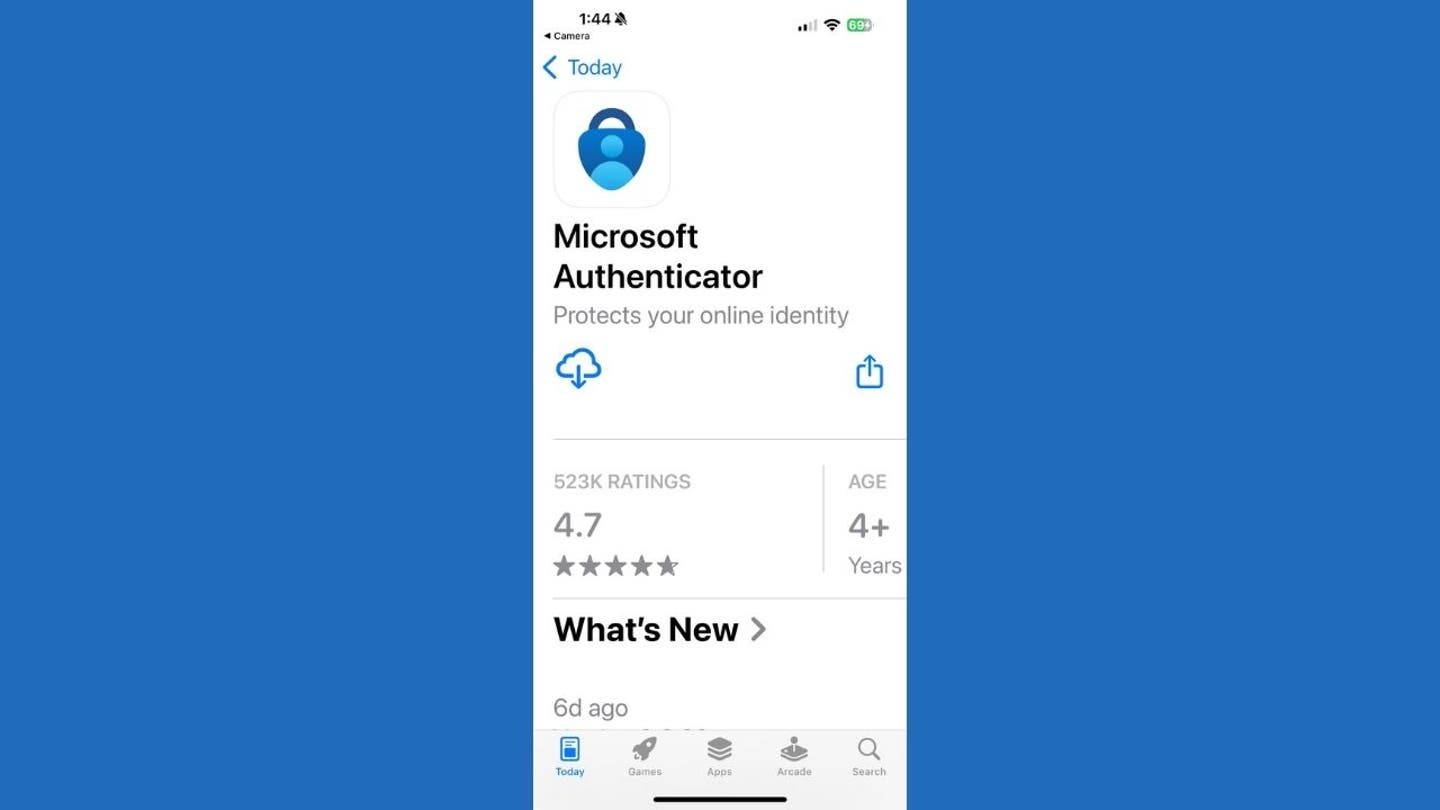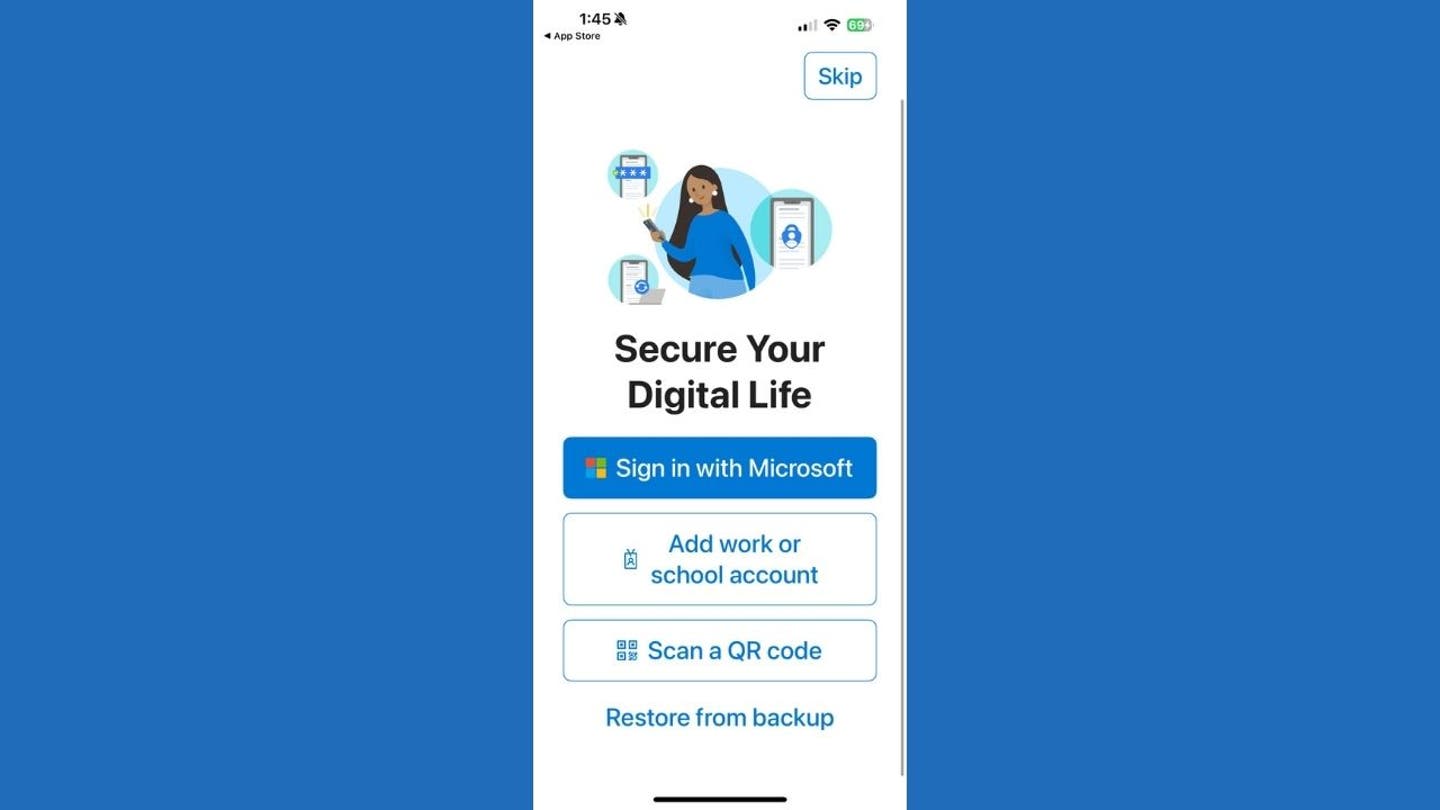NEWYou can now listen to articles from reputable sources!
If you rely on Microsoft Authenticator to store your login details, it’s time to take some action. Microsoft has recently started to remove stored payment methods from the app. Additionally, as of August 1, 2025, stored passwords are no longer accessible within Authenticator.
Even though the app will continue to support two-factor authentication (2FA) and passkeys, it will no longer serve as a password manager.
But don’t worry, there are ways to save your data and upgrade your security options. Let’s delve into the changes, the whereabouts of your data, and how to ensure the safety of your credentials.
Microsoft logo and sign (Kurt “CyberGuy” Knutsson)
Reasons behind Microsoft’s decision
Microsoft is paving the way for a future without passwords. As part of this transition, it no longer wants the Authenticator app to manage passwords or payment methods.
In early July, Microsoft began migrating stored passwords and addresses to users’ Microsoft accounts and the Edge browser. This data is currently secure. However, any payment information stored in the app was permanently removed on August 1.
This move is intended to streamline the app’s focus on 2FA codes and passkeys exclusively. Other functionalities are being integrated into different Microsoft tools.

Microsoft Authenticator app in the Apps store on iPhone (Kurt “CyberGuy” Knutsson)
Location of your passwords
If you had saved passwords in Microsoft Authenticator, they have now been transferred to your Microsoft account and the Microsoft Edge browser. You can still access and autofill them on your mobile device, but the process varies depending on your phone. Here’s how to enable Edge for password autofill:
For iPhone (iOS 18.5 and newer):
- Open Settings
- Tap General
- Select AutoFill & Passwords
- Toggle on AutoFill Passwords & Passkeys
- Under Allow Filling From, select Edge (if available)
Note: Edge may not appear as an autofill provider for all users, depending on the version of Edge installed on your iPhone. If Edge is not an option, consider using Apple’s new Passwords app or switching to a dedicated password manager that fully supports iOS autofill.
WHAT IS ARTIFICIAL INTELLIGENCE (AI)?
For Android:
Settings may vary based on your Android phone’s manufacturer
- Go to Settings
- Tap System (or “General management” on Samsung devices)
- Tap Languages & input (sometimes under “Advanced” or “Input assistance”)
- Tap Autofill service
- Select Edge from the list of providers
If Edge is installed and properly registered as an autofill service, it will support autofill for saved credentials. If Edge is not listed, it means your version does not support autofill registration or your device manufacturer has customized settings differently. In such cases, use a dedicated password manager with strong Android support.

Sign in with Microsoft screen on iPhone (Kurt “CyberGuy” Knutsson)
Transferring passwords to a new app
If you prefer an alternative to Edge, you still have the chance to export your credentials if they were moved to your Microsoft account or Edge.
Follow these steps:
- Open Microsoft Authenticator
- Go to Settings
- Tap Export Passwords
- Save the file to your device or cloud storage
- Download a new password manager
- Tap Import on the app’s dashboard
- Upload the saved file
Your passwords are now securely stored in the new app.
Important: Microsoft advises that if you switch to another autofill provider, you should disable Authenticator as the autofill provider in your device settings. Conversely, if you use Passkeys, ensure that Authenticator remains enabled as your Passkey Provider to avoid accidentally disabling those credentials.
Should you uninstall Microsoft Authenticator?
It’s not necessary to delete the app just yet. Microsoft Authenticator still serves a crucial role in your digital security. It generates 2FA codes and stores passkeys, both essential for safeguarding your accounts.
However, if you are transitioning to another app, you will need to manually disconnect Microsoft Authenticator from each account and establish a new method. Unfortunately, Microsoft does not support exporting 2FA tokens to another app, so you will need to handle each account individually.
Choosing the right password manager
Selecting the correct password manager can significantly impact your online security. Here are some key features to prioritize:
- Secure encryption
- Device synchronization across various devices
- Strong password creation for all accounts
- Autofill capabilities in browsers and apps
- Extensions for popular browsers like Chrome, Firefox, Safari, and Edge
- Emergency recovery options in case you forget your master password
- Password breach alerts
- Built-in MFA support
For expert recommendations, check out the top-rated password managers of 2025 based on security, features, and usability at Cyberguy.com/Passwords
Implications for users
If you have been relying on Microsoft Authenticator as your all-in-one security solution, it’s time to rethink your strategy.
Now that the August 1 deadline has passed, make sure to:
- Export your stored passwords
- Transfer payment information to a new location
- Select a password manager that meets your requirements
- Retain Microsoft Authenticator for passkeys and 2FA
Dedicating just 15 minutes now can save you hours and potentially prevent a security breach in the future.
Kurt’s key takeaways
Microsoft’s decision may seem sudden, but it aligns with the broader trend towards password-less security. While losing the app’s all-in-one functionality is disappointing, there are numerous excellent alternatives available to bridge the gap. By taking a few simple steps, you can safeguard your data and establish a more secure, future-ready system.
What’s your next move? Share your transition plans and reasons with us by reaching out at Cyberguy.com/Contact
Copyright 2025 CyberGuy.com. All rights reserved.





